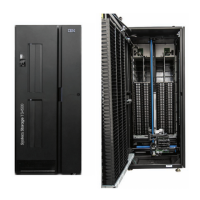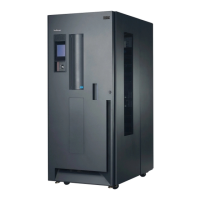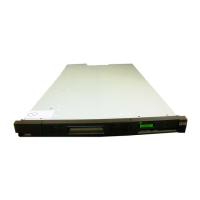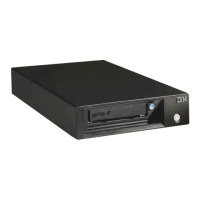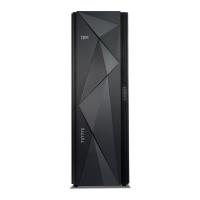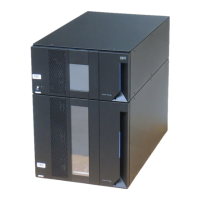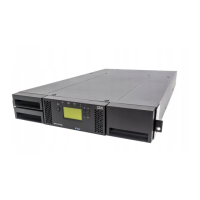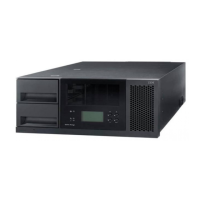• Does not require special device drivers.
• Is available for most major platforms.
• Scans the host interface and nds and displays for selection all IBM LTO devices. The tool does not
display non-IBM devices.
The IBM Tape Diagnostic tool (ITDT) is available as a command line utility and a graphical user interface
(GUI) version.
• The IBM Tape Diagnostic Tool (ITDT) is started by entering the executable le from the directory
where the tool is located. The Help feature gives a brief explanation of each function and shows the
syntax.
Note: Be sure that you have the most current version of ITDT if you are updating rmware on a recent
drive type. Before ITDT is used, verify that your library host operating system is at the current released
level. This action ensures optimum read/write operations for diagnostic tests.
IBM maintains the current levels of ITDT on the web. Go to http://www.ibm.com/support/xcentral and
follow these steps to access this material.
1. From the Fix Central web page, choose the Select Product tab, select System Storage from the
Product Group list.
2. Select Tape Systems from the System Storage list.
3. Select Tape drivers and software from the Tape systems list.
4. Select IBM Tape Diagnostic Tool ITDT from the Tape drivers and software list.
5. Select the appropriate operating system from the Platform list and click Continue.
6. Select the appropriate version from the list.
Additional information about the IBM Tape Diagnostic Tool (ITDT) is included in the IBM
®
Tape Device
Drivers Installation and User's Guide, and can be found on the web at http://www-01.ibm.com/support/
docview.wss?rs=577&uid=ssg1S7002972.
Event codes
Events are used in the library Ticket and Event system to store all types of events with a unique event
code and event description.
Event Reporting System
These event codes are shown on the user interfaces as the resulting code for any type of event at the
highest level of information. No internal error code is shown at this level.
Events are sent by the library to different recipients like SNMP targets or email notication. These events
have a common structure and unique codes for every type of event.
The event code system is used for the following events:
• Error event (2XXX)
• Warning event (4XXX)
• Conguration event (8XXX)
• Informational event (9XXX)
Event code structure
Example event code
Event: 2057 - Robotics shipping lock in incorrect position
84
IBM TS4300 Tape Library Machine Type 3555: User's Guide
